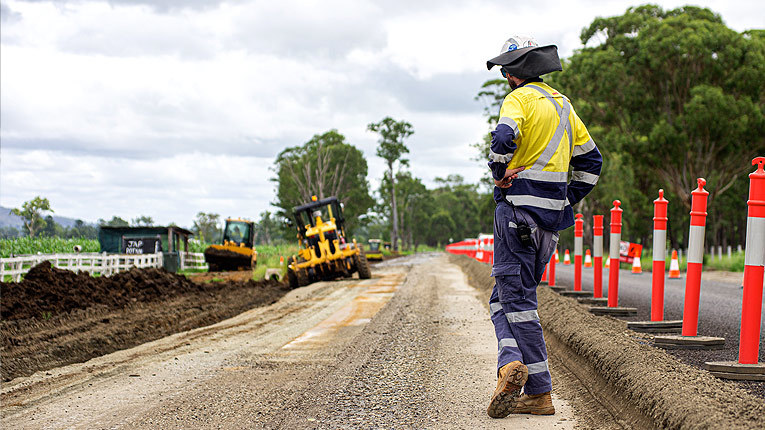
At Ventia, our Vision is to lead the way in infrastructure services by harnessing the power of technology and being sustainable in all that we do. It's teams like those on our Road Asset Management Contract (RAMC) in south coast QLD who are making smart procurement decisions, reusing materials in their operations, and trialing innovative technology to try and enhance sustainability, that shows we're delivering on that vision.
For Contract Manager Andrew Spence, being sustainable is best practice in asset management and maintenance. It's about getting the same or better outcomes with reduced levels of waste, fewer operational hours and less materials.
"The result is our team being able to deliver more work for our client with less impact on their budgets and their customers," Andrew says. "Most importantly, we're helping to reduce our impact on the environment we have the pleasure of working and living within."
Trialing new methods
In the sustainable procurement space, Andrew and his team have championed the first ever trial in Queensland's south coast region of a road surface retexturing method called 'shotblasting', which is 100% recyclable.
Asset Manager Giles Lewer explains shotblasting "restores the micro texture of the individual stones - or aggregate - which erodes over the life of the wearing surface and causes traction issues for braking motorists. It also improves the macro texture - or what you could call voids in the surface".
Trialed on a roundabout in Hope Island on the Gold Coast, the specialised machine created by Multitech fires tiny shots of material at the road. This material is like mini ball-bearings or pellets about the size of a pin head, and they transform the micro texture of the aggregate, improving the skid resistance for braking vehicles moving through the roundabout.
Giles says that as the shots are separated from the debris it enables them to be reused and fired at the road surface again and again. "The debris is collected and separated into easy-to-handle bins and can be used as asphaltic concrete filler in future mixes for road resurfacing projects across the network," Giles notes.

Aggregate being spread on the crumbed rubber binder
Day-to-day sustainability
Whilst not every activity is new and innovative, many of the rehabilitation projects on RAMC involve performing the in-situ stablisation of road pavements and performing seals with a recycled component.
For the in-situ stabilisation method, the existing road material is combined with new aggregate, stabilised (i.e. strengthened) with either lime, cement or a foamed bitumen, and then finished off with a new wearing surface. The treatment also eliminates the use of trucks usually used to haul away the existing material.
The team has also been using crumbed rubber binder for their seal projects on rural roads, which is a material created by recycling the rubber in old tyres and incorporating it into the mixture of the binder.
This form of binder has benefits including its excellent aggregate retention as well as improved flexibility and longevity. This means it's less prone to bleeding, cracking and stone loss - a durability which would be attractive to any road maintenance provider.
Individuals play their part
People across the RAMC team are also contributing personally to sustainability efforts by reducing their carbon footprint.
Championed by the project's SHEQ Manager, Kimi Upu, a number of activities are underway at the depot.
"We have implemented clearly marked containers for all sorts of different recyclables - from batteries and ink cartridges to soft plastics and coffee pods."
"We are even in the process of procuring solar lighting for the depot and have put timers on all the outside lighting to ensure there's no energy being wasted," Kimi says.
As they are only a year into their new contract, Andrew says he's sure the team will continue to innovate and focus on what more they can do to ensure the reputation of Ventia as a sustainable organisation continues to grow.